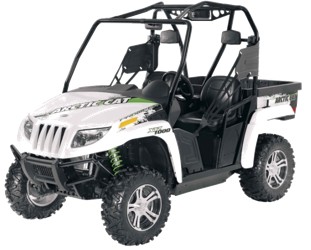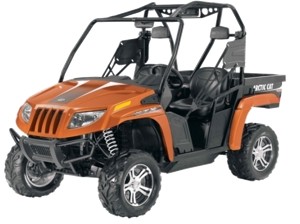


—————— |
| PRODUCT REVIEWS |
| — WHEELS & TIRES |
| — BOXES & BAGS |
| — HAUL & TOW |
| — AG & FARM |
| — SHOP & GARAGE |
| — PERFORMANCE |
| — RIDING GEAR |
| — CAMPING |
| — POLARIS RZR |
| — YAMAHA RHINO |
| — KAWASAKI TERYX |
| — KAWASAKI MULE |
| — WINCHES & PLOWS |
| — MISCELLANEOUS |
————— |
| ATV ADVENTURES |
| ADVENTURE PREP |
| ADVENTURE SITES |
————— |
| 2010 ATV & UTV TESTS |
| 2006 ATV & UTV TESTS |
| 2004 ATV & UTV TESTS |
————— |
————— |
————— |
| XTREME CONDITIONS |
————— |
————— |
————— |
————— |
————— |
————— |
————— |
—————
|



Legislation ALERT
In a move sure to have far-reaching effects on the way federal lands are used in the future, the U.S. Ninth Circuit Court of Appeals overturned a long-standing rule that prevented non-federal interests, such as rider groups, from intervening in environmental disputes in the Western States. In support of the recreation group parties in the case, the Motorcycle Industry Council (MIC) and the Specialty Vehicle Institute of America (SVIA) led the briefing and argument on the issue that resulted in the Court’s reversal of precedent.
In the underlying case, Idaho rider groups sought to intervene in a lawsuit brought by the Wilderness Society and others against the U.S. Forest Service over its travel management plan in the Sawtooth National Forest. The District Court, however, denied intervention under the “federal defendant” rule. The rider groups then asked MIC and SVIA to help fund their appeal through the associations’ OHV Organization Support Program. After review of the merits of the case and the broader implications of a successful appeal, the MIC and SVIA Boards not only agreed to help fund the rider groups’ appeal, but also directed staff to seek to have MIC and SVIA joined to the appeal as amici curiae (friends of the court) to lead the effort to overturn the “federal defendant” rule.
The so-called “federal defendant” rule categorically prohibited anyone other than the federal government from intervening in claims under the National Environmental Policy Act (NEPA), the main legal mechanism for disputing government actions that affect the environment. NEPA is the law at issue in many recreation-related lawsuits as well as other land access disputes involving such diverse parties as Indian tribes, state and local governments, mining and timber interests, and environmental groups. The rule, in effect, made it impossible for interested parties to engage in litigation to defend the underlying agency action or to represent their interests in the ultimate outcome of the case.
In striking down the “federal defendant” rule, Circuit Judge Barry G. Silverman wrote for the eleven judge en banc appeals court that, “Because the rule is at odds with the text of Federal Rule of Civil Procedure 24(a)(2) and the standards we apply in all other intervention of right cases, we abandon it here.”
Tim Buche, president and chief executive officer of the MIC, largely credits the generous support of its membership, which made the decision for the associations, on behalf of the riders, to become directly involved in the case and ensured access to the highest-level staff resources, in-house counsel and outside legal representation possible in this type of case.
Buche explained that MIC and SVIA member funds are designated for land access and managed by a joint committee comprised of MIC and SVIA members. Historically, the associations have judiciously provided grants to outside organizations that request funding to pursue land usage initiatives such as grassroots campaigns or trail maintenance efforts. In the past two years, however, the associations have deemed it prudent to very selectively invest and directly manage efforts in the most critical, high-stakes land use legal issues impacting the whole industry and rider community.
Because of its critical, far-reaching nature, the associations elected to get directly involved in the “federal defendant” issue under the direction of Paul Vitrano, MIC and SVIA executive vice president and general counsel. Paul Gale of Troutman Sanders LLP and Erik Pritchard of Pritchard Law Firm were retained as outside counsel.
“In this case,” Vitrano explained, “we were confident our expertise and long history with the OHV community would give riders the best chance for success. We brought more to the table, the ‘horsepower’ if you will, than anyone else could have.
“Our members and association staff are riders themselves. Although funded by industry, MIC and SVIA ultimately are always guided by what is best for the riders.” Vitrano added, “This result will forever enhance the ability of riders to protect their access to public lands.”